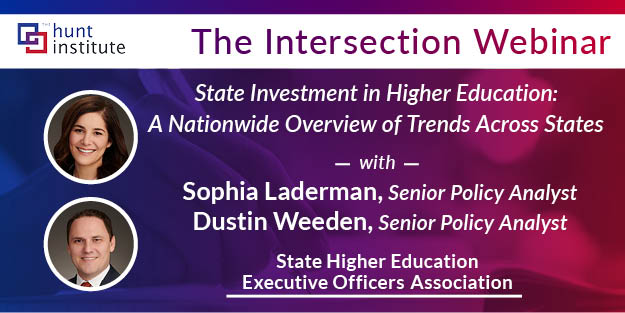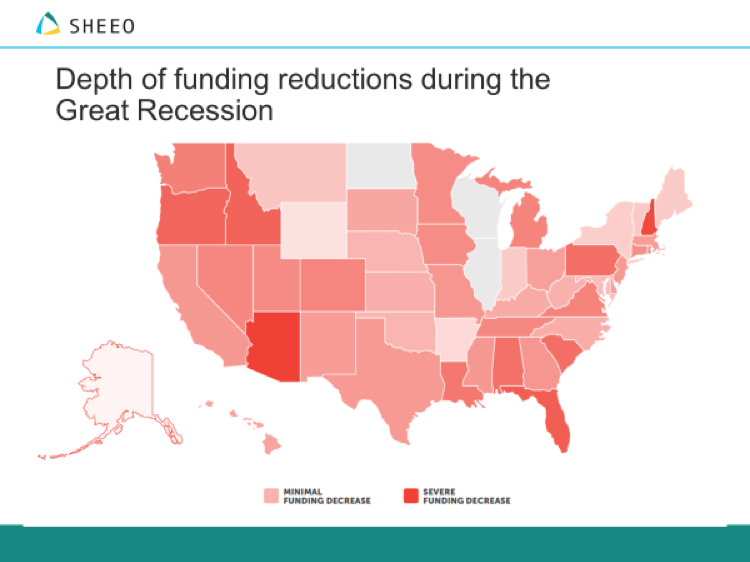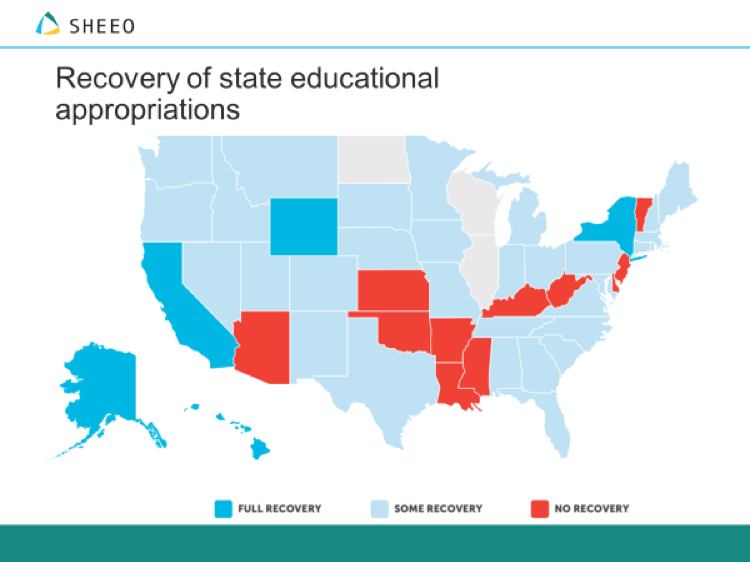

August 2, 2019

Discussions about college affordability focus on a wide range of subtopics such as the increasing reliance on student financial aid and the rising “sticker price” of attending an institution of higher education (IHE). But those discussions don’t always mention a fundamental affordability issue that is the driving force behind many of these trends: state investment in higher education.
The level of funding that state governments provide for IHEs has significant ramifications on other factors related to college affordability, including the percentage of higher education costs shouldered by students and their families.
For the last 16 years, the State Higher Education Executive Officers Association (SHEEO) has produced an invaluable resource to help state leaders learn about this essential topic: the State Higher Education Finance (SHEF) report. SHEF contains detailed information about student enrollment, appropriations for higher education, tuition revenue, and financial aid for all 50 states and Washington, D.C. The combination of this information provides a helpful snapshot of how states are currently investing in postsecondary education, while the longitudinal data set allows SHEEO to identify trends over time.
Sophia Laderman and Dustin Weeden, Senior Policy Analysts at SHEEO, walked us through the findings of the latest SHEF report on our most recent Intersection webinar.
Learn more about the 2018 SHEF Report from our key takeaways and full webinar recording below.
Key Takeaways | State Investment in Higher Education: A Nationwide Overview of Trends Across States
Sophia and Dustin boiled the nationwide findings down to four main takeaways:
Sophia and Dustin also pointed out that despite the recent stabilization on the national level, there is a significant amount of variation across states. As you can see from their maps below, there are differences in both how deeply states cut funding during the Great Recession and how much higher education funding has been restored since then:


Watch the webinar
Register here for our August Intersection Webinars!
See you at The Intersection!

The Hunt Team